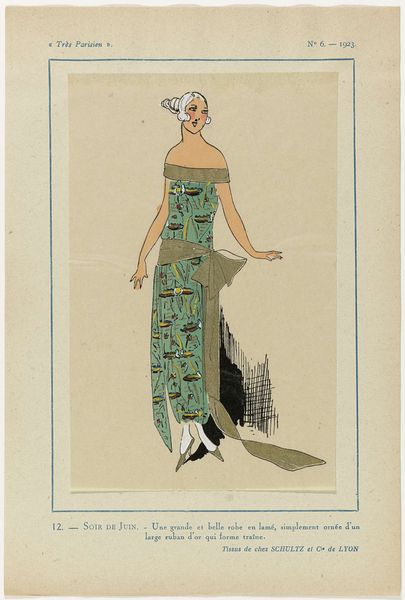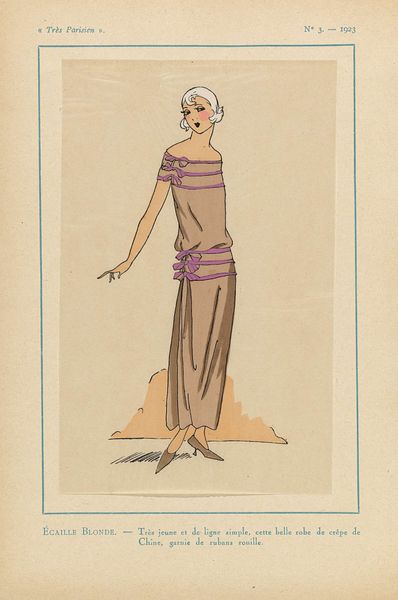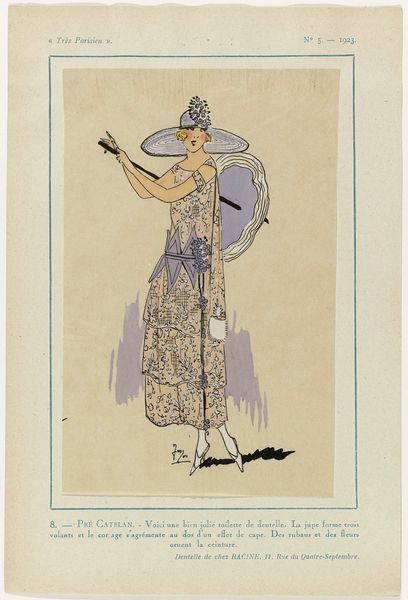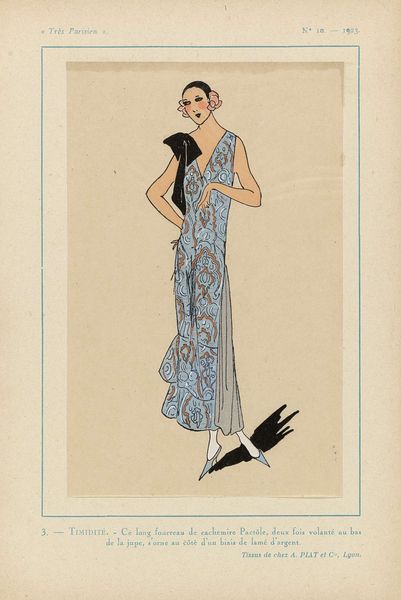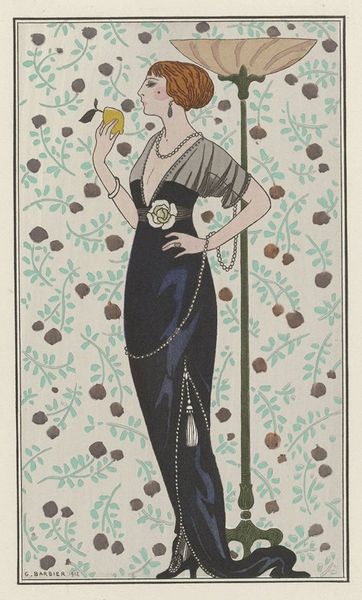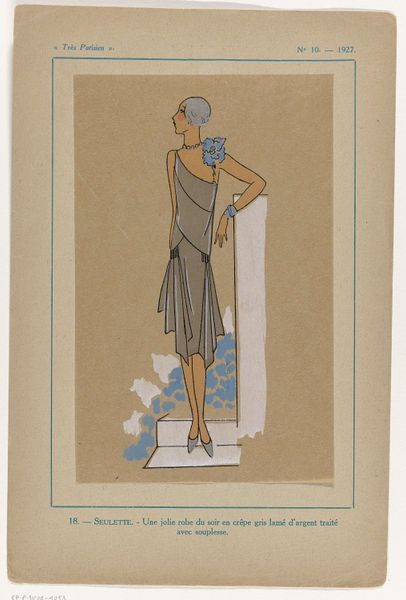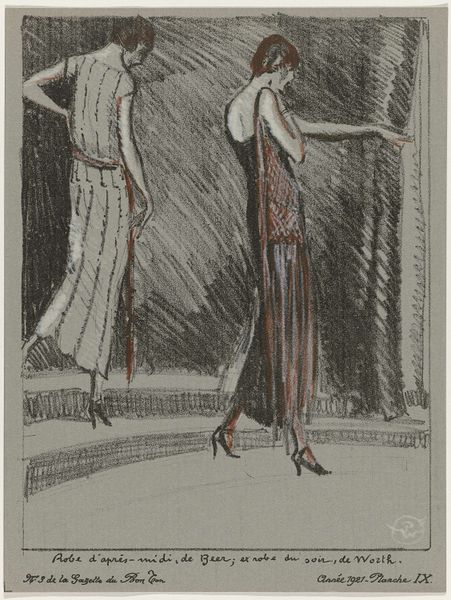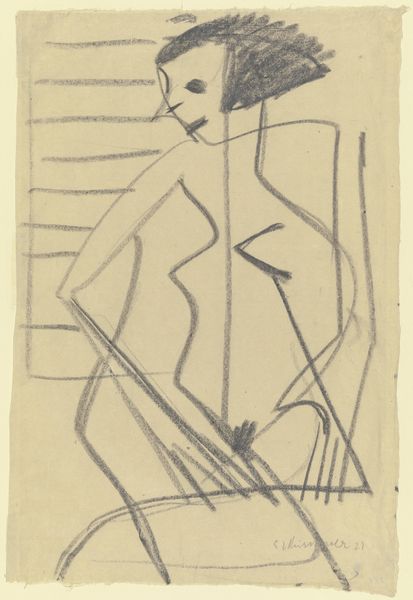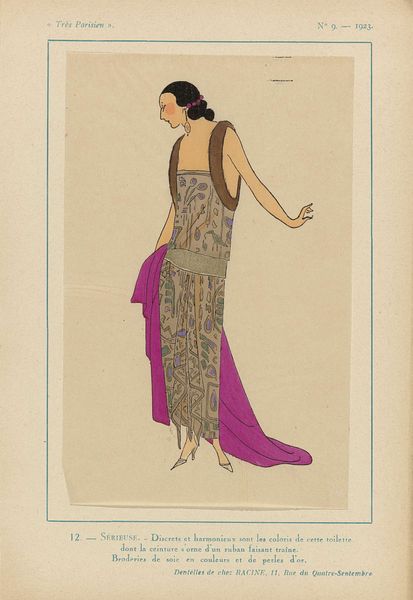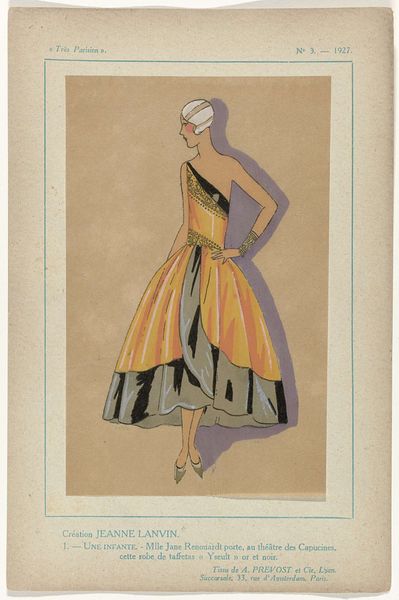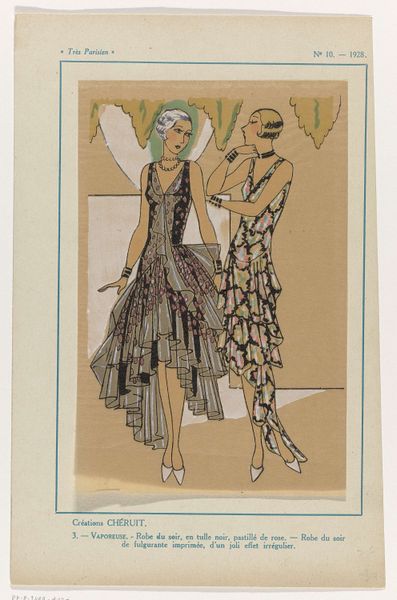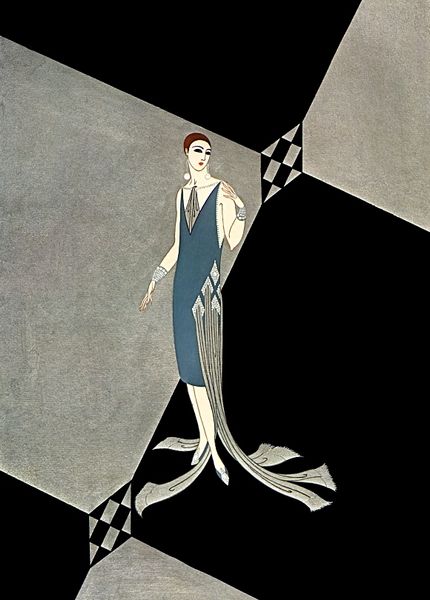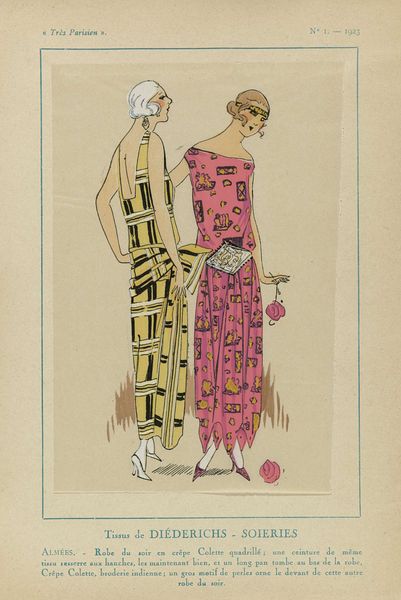
drawing, watercolor
#
portrait
#
art-deco
#
drawing
#
figuration
#
watercolor
#
historical fashion
#
watercolour illustration
#
watercolor
Copyright: Public Domain: Artvee
Curator: This is George Barbier's "La chambre bleue d’arthénice ; Robe du soir, de Beer" from 1923, an elegant watercolor drawing. It encapsulates the Art Deco style beautifully. Editor: My first thought is a sort of melancholy glamour. There’s a distinct feeling of poised solitude about her. Curator: It's interesting you pick up on that melancholy. Barbier was a key figure in illustrating the "années folles," the Roaring Twenties, capturing its fashion and spirit for publications like "La Gazette du Bon Ton." But this piece feels like a quiet counterpoint to the exuberant revelry we often associate with that era. Editor: Absolutely, the color palette is muted, despite the elegance. And the setting – what is that, a blue room with a checkered floor? – creates an odd sense of detachment, almost like a stage set. Is she waiting for someone? The fallen rose adds a dramatic touch. Curator: That detachment is a crucial aspect of Art Deco. The focus shifts from emotion to a celebration of form, line, and design. The column, the dress, even the figure herself, are all stylized elements contributing to an overall aesthetic experience rather than conveying personal narrative. The illustration was meant to showcase an evening dress designed by de Beer, one of the most popular and groundbreaking designers in the roaring twenties. Editor: I can see that tension between showcasing luxury and presenting a lived experience. Her pose, with her hand casually placed on her hip, feels contemporary, almost confrontational. Yet she's contained within this very constructed, artificial space, highlighting the societal constraints on women even amidst this newfound freedom. Curator: Precisely. And it's through that tension that Barbier's work becomes so compelling. He presents an image of modernity, of feminine power and style, while simultaneously acknowledging the artifice and underlying social structures at play. Barbier captures both the excitement and the unease of the period in his body of work. Editor: Looking at this again, the slightly desaturated tones speak volumes. It's like a faded memory of an era – glamorous, yes, but tinged with a sense of longing, hinting at complexities that transcend the surface glitter. Curator: It's a potent reminder that history isn't just about the grand narratives, but about these intimate glimpses into individual lives and the social currents that shaped them. Barbier helps us consider the nuances of this iconic period, and what it was like to live it.
Comments
No comments
Be the first to comment and join the conversation on the ultimate creative platform.

